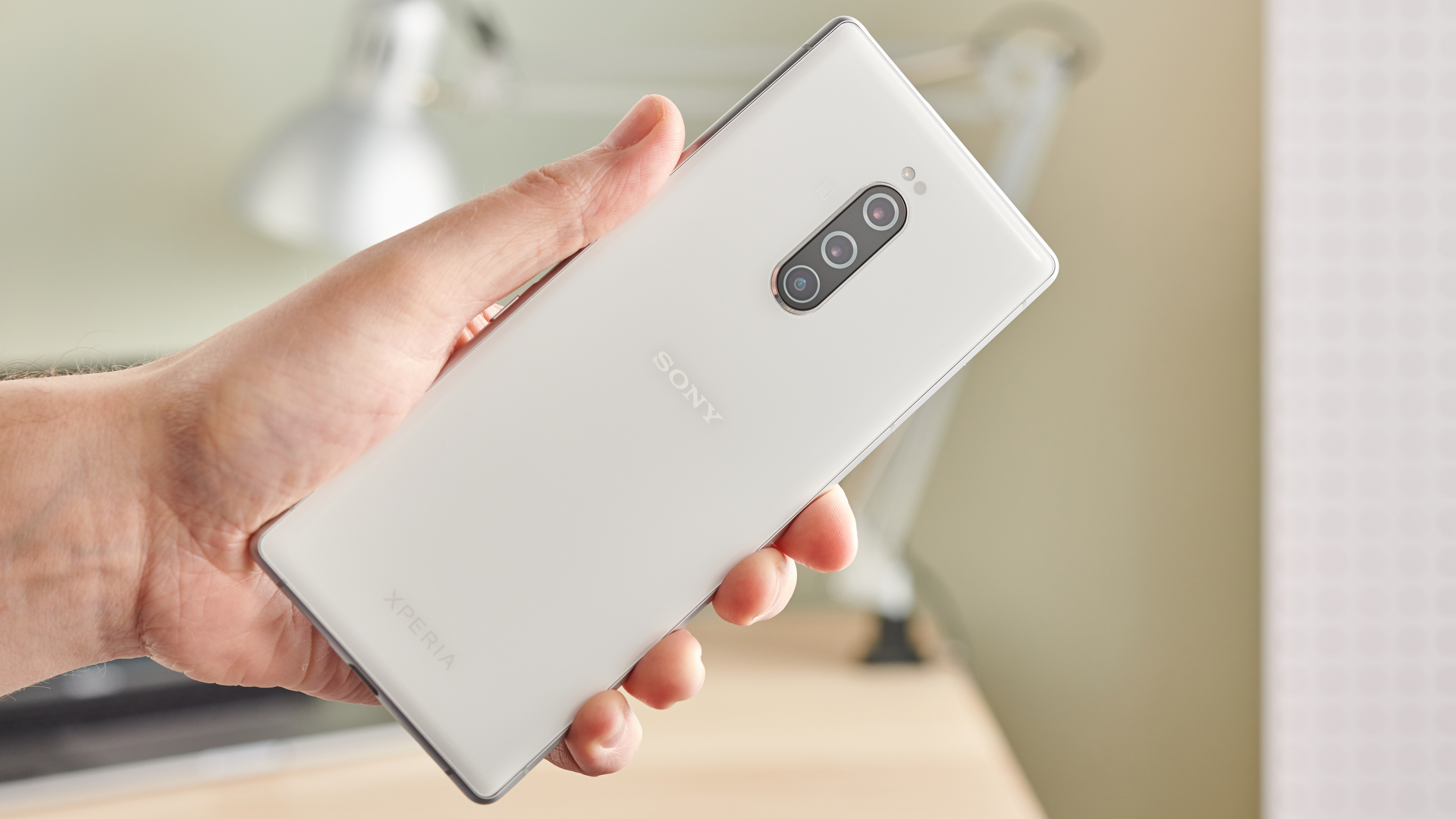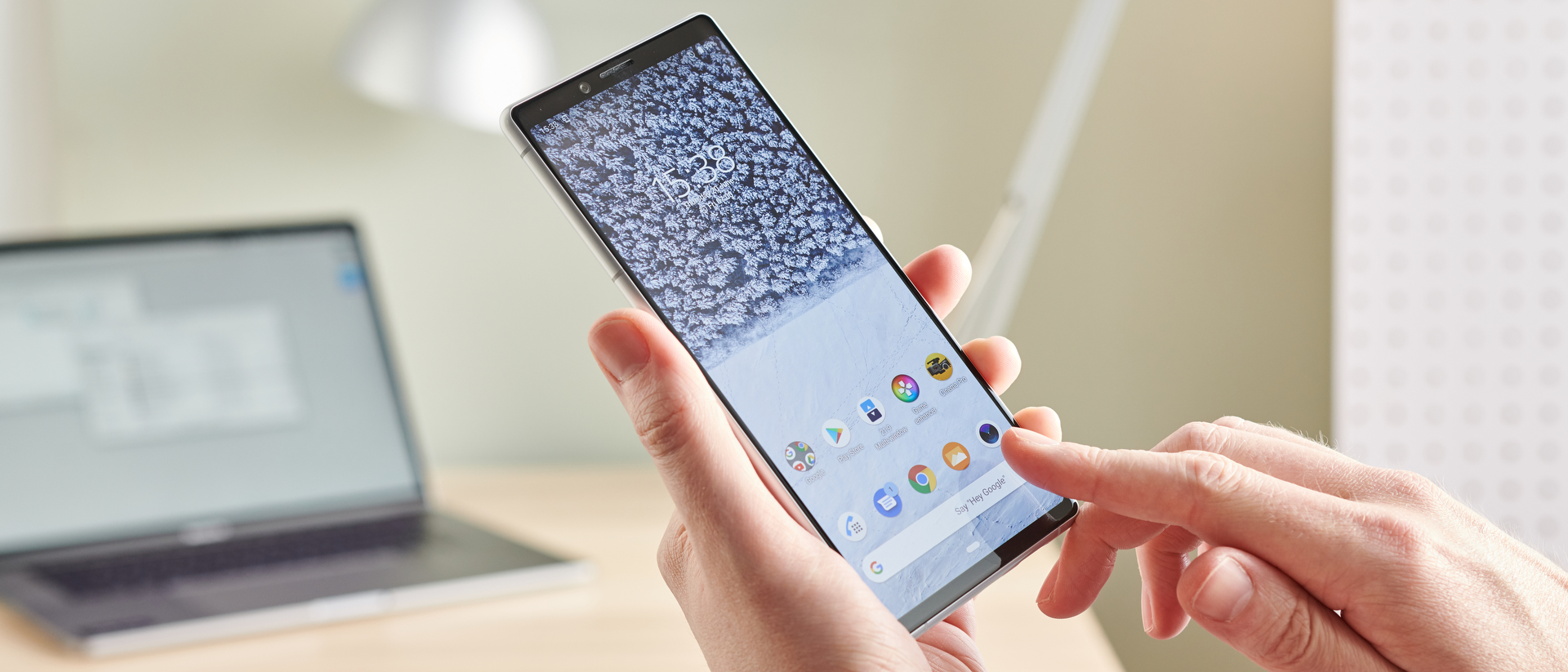TechRadar Verdict
The Sony Xperia 1 is a solid improvement on most of Sony’s recent smartphones – it has a few mis-steps and annoyances, but it’ll be of particular interest to movie buffs or budding film-makers.
Pros
- +
21:9 aspect ratio actually has uses now
- +
Impressive chipset and performance
- +
Film-making app is a big draw
Cons
- -
The display's max brightness is too dim
- -
Battery life could be a lot better
- -
Fingerprint sensor seems unreliable
Why you can trust TechRadar
Update: there's a newer version of the Sony Xperia 1 called the Xperia 5. It's a downgrade in a few minor areas, but it's also more affordable.
So if you're interested in the Xperia 1 but can't justify its cost, or just don't need all its advanced features, maybe the Xperia 5 is the handset for you. Check out our review to find out all about the newer handset.
Sony’s smartphone division has seen better days – recent offerings like the Sony Xperia 10 and Xperia 10 Plus haven’t exactly wowed us, and the company’s decision to produce all its handsets with 21:9 aspect ratio screens seemed like the idea of a crazy person – however the Xperia 1 has prompted us to think again.
With an improved chipset, camera array, and software loadout over previous phones, the Xperia 1 is certainly a premium alternative to its predecessors, but according to Sony it’s also a soft relaunch of the Xperia brand, hence the name.
It’s also aimed at a narrower audience – while the 21:9 Xperia phones were aimed at those who love to consume movies on the go, and who appreciated the widescreen experience, the Xperia 1 is more specifically aimed at movie-makers, with a specific movie creation app and range of settings for optimizing viewing.
Certainly viewing content on the Xperia 1 is an improvement over previous Sony handsets – but does it deliver in terms of the other specs and features we look for in a flagship device?
If you're interested in the phone, it's worth knowing thatne of the most interesting features of the Sony Xperia 1 is its Cinema Pro app, that lets you film 21:9 4K footage as though you're using a Sony Alpha DSLR camera.
Sign up for breaking news, reviews, opinion, top tech deals, and more.
Budding tech enthusiasts that we are, we knew we couldn't review the phone and not try out this app, so we decided to film an entire short film just using the Xperia 1, to see how it stacks compared to traditional camera competitors.
We wrote up the experience too, so you can tell how well the phone works to record movies. You can read our feature here: I filmed an entier short film on a Sony Xperia 1, just to see if I could.
Sony Xperia 1 price and availability

The Sony Xperia 1 price may come as a bit of a shock to some – at $949 / £849 (roughly AU$1,365) for its single 128GB storage size, it sits firmly in the upper tier of smartphone pricing.
That means it’s pricier than the Samsung Galaxy S10, which cost $899 / £799 / AU$1,349 for its 128GB version when it was released – and the Samsung handset sits at number 3 on our list of best smartphones, so the Xperia 1’s price tag means it’s playing in the big leagues.
You can pick the Sony Xperia up now in many regions, including the UK, but you’ll have to wait until July 12 in the US to grab the handset. There’s no announced Australian release date, but we’ve contacted Sony for more information, so stay tuned.
Watching movies
Sony’s intention in making phones with 21:9 screens is to make them the best handsets available for viewing movies, which are typically 21:9, unlike TV shows, YouTube videos and streaming platforms’ originals, which are all in various other dimensions. If you watch movies on the Xperia 1, as with the Xperia 10 series, you won’t get any black bars on the top or bottom.
Sony has made some improvements over the Xperia 10 range for the Xperia 1, which it claims makes it even better for viewing movies. These include Dynamic Vibration, which causes the handset to vibrate slightly when viewing media in order to replicate the effect of booming audio in a cinema, and Creator mode for the display, which slightly alters the RGB makeup of the screen to resemble the colors of a theater screen.

These features all work well to replicate, albeit on a small scale, the cinematic experience, but we’re still not convinced that the content is available right now for you to take full advantage.
Sony claims 70% of content on Netflix is 21:9, which may be true, but that doesn’t mean 70% of viewed content on Netflix is in that aspect ratio – TV shows and Netflix Originals are much more popular for commutes or bedtime viewing, and these aren’t in 21:9, so in reality you might not get as much out of the aspect ratio as Sony hopes.
Making movies
Perhaps you won’t be watching 21:9 content all the time, but Sony also wants to appeal to the crowd who’d be tempted to create such content it themselves, and so it’s equipped the Xperia 1 with high-end video recording features in the new Cinema Pro app.
You can record 21:9 content and alter key settings like resolution, frames per second, white balance, shutter speed, lens size and color filter – it’s based on the tech in Sony Alpha cameras, and with it you can capture footage that’s barely discernible from content shot on high-end cameras in terms of quality.
There is one problem though, which could ruin the film-making experience – the Sony Xperia 1’s display has a very limited max brightness, as we’ll get into later, which means footage you shoot on the Xperia 1 may look great on the phone, but when you transfer it to another device it looks far too bright. When we shot films then imported them to our computer, we needed to use post-processing tools to darken the footage down to match now it looked on the phone.
Design
As with all Sony’s new 21:9 phones, the Sony Xperia 1 looks rather long, thin and lanky, and people often commented on its unusual dimensions when they saw the handset.
Those dimensions are 167 x 72 x 8.2mm, with a weight of 180g – so the phone isn’t actually that much longer than your average plus-sized handset, it’s just trimmed a few millimetres of width. Compared to some phones it feels a little heavy, although other plus-sized devices can be up to 20g heavier than this.
The phone has Corning Gorilla Glass on the front and back, with a metal frame between the glass. Despite these premium materials, and its weight, the handset feels a little delicate, both because its long thin body feels like it could bend if you applied pressure, and also because when you tap the rear of the handset it vibrates slightly – the phone didn’t get injured in our time with it though, so hopefully it’s more durable than it appears.
The phone comes in white, purple, black and gray colors – at the time of writing only black and purple are widely available, while gray is an exclusive to a few retailers and white isn’t on sale yet – we’ll let you know when it is.

We tested the white handset, and it certainly looks sleek – with the silver frame it looked great, and the vertically aligned three-camera array in the center of the phone’s rear wasn’t as much of a bump as it is on other phones.
On the bottom of the device is a USB-C port, and arranged down the right side from top to bottom are a volume rocker, fingerprint sensor, power button and unique camera button. While the first two of those are standard fare on phones, the latter two aren’t – most premium handsets have the fingerprint sensor in the screen these days, while few offer a dedicated camera button.
This button works like a shutter button on a camera, and is in a similar position – so you can hold your phone like you would a camera, and press the button to snap a picture instead of pressing on the screen. On top of that, if you hold the button you can summon the camera app immediately, whether the phone is on or not, which is a useful shortcut.
And it’s a good job that one of these two lesser-spotted features is useful, because the side-mounted fingerprint sensor definitely isn’t – more on that later.
Display
The Sony Xperia 1’s screen is one of the phone’s big stumbling blocks, which is a shame – and a surprise given that the handset is supposedly optimized for the content you’ll watch and record on it. In short, the Xperia 1 display has a surprisingly low max brightness.
It was hard to see the screen when we were out and about, even if it wasn’t a particularly sunny day, which made it challenging to take pictures, record video, or use everyday phone functions. When the screen brightness was at max and adaptive brightness off, the handset didn’t even come close to matching the brightness of other phones we compared it to, like the Huawei P30, even when viewing the same app.

The display is a 6.5-inch OLED, with a resolution of 1644 x 3840 and pixel density of 643 pixels per inch – that’s a pretty impressive spec for a smartphone screen, and content viewed on it looks great, if you can look past the dim screen.
Content looks even better thanks to Creator mode, an option in the settings that replicates the RGB setup and image processing of cinema screens. This is designed to display content in the way creators intended it to be viewed – in effect it gives a slight red tint to the display, as opposed to the bluer look of Standard mode.
You can also change the white balance of the screen to suit your preference, either by selecting one of several presents or by altering the RGB makeup yourself. We found this a fun novelty, but for people who like viewing content a certain way, or have specific color blindness, it could be a hugely useful feature.
There’s no notch or punch-hole camera breaking up the display here – instead the Xperia 1 has a good old-fashioned bezel above the screen, which houses the notification light, front-facing camera and speaker. Those who like to keep up with the newest trends might find this a bit antiquated, but we don’t think many people will mind the slight black bar at the top of the screen.

Tom Bedford joined TechRadar in early 2019 as a staff writer, and left the team as deputy phones editor in late 2022 to work for entertainment site (and TR sister-site) What To Watch. He continues to contribute on a freelance basis for several sections including phones, audio and fitness.
